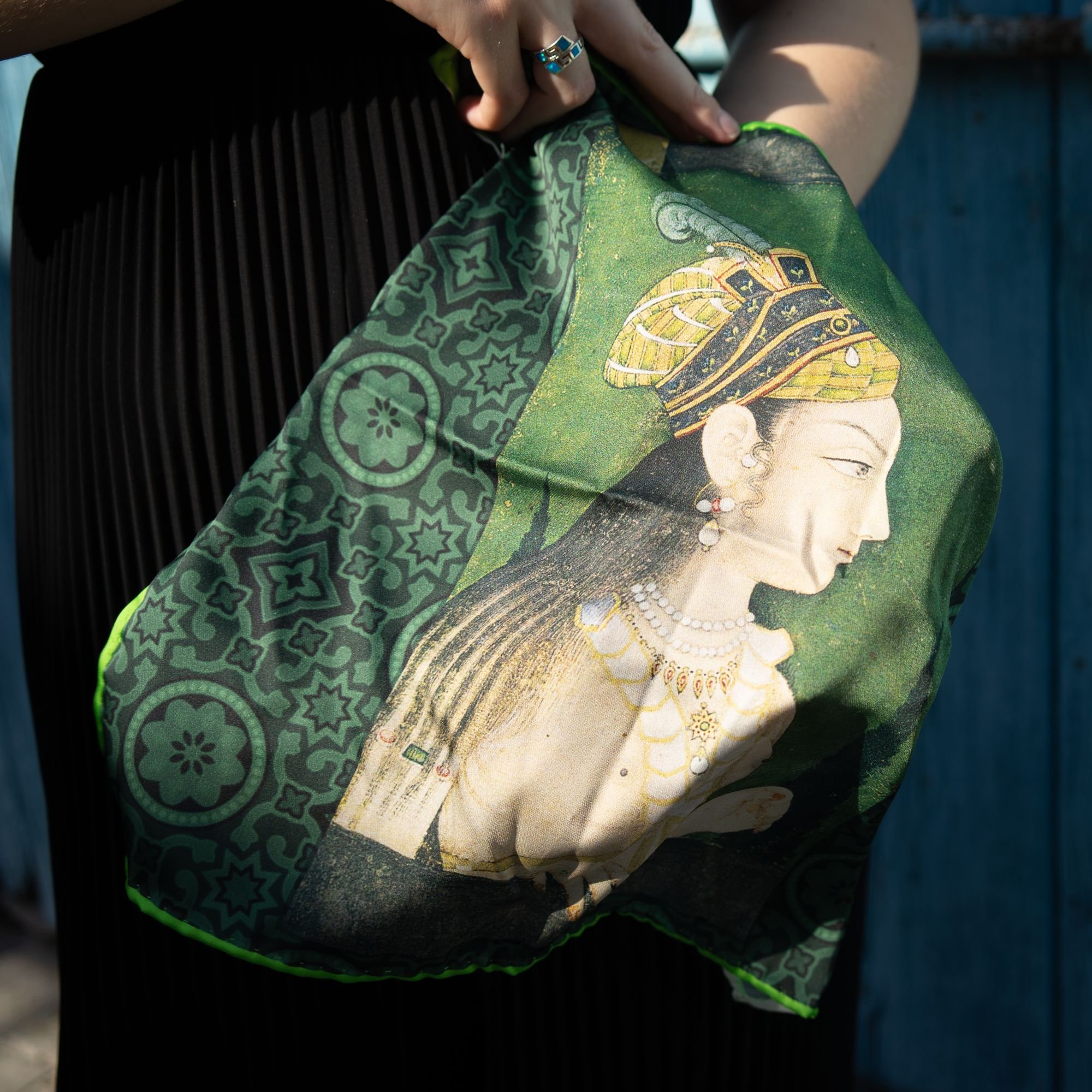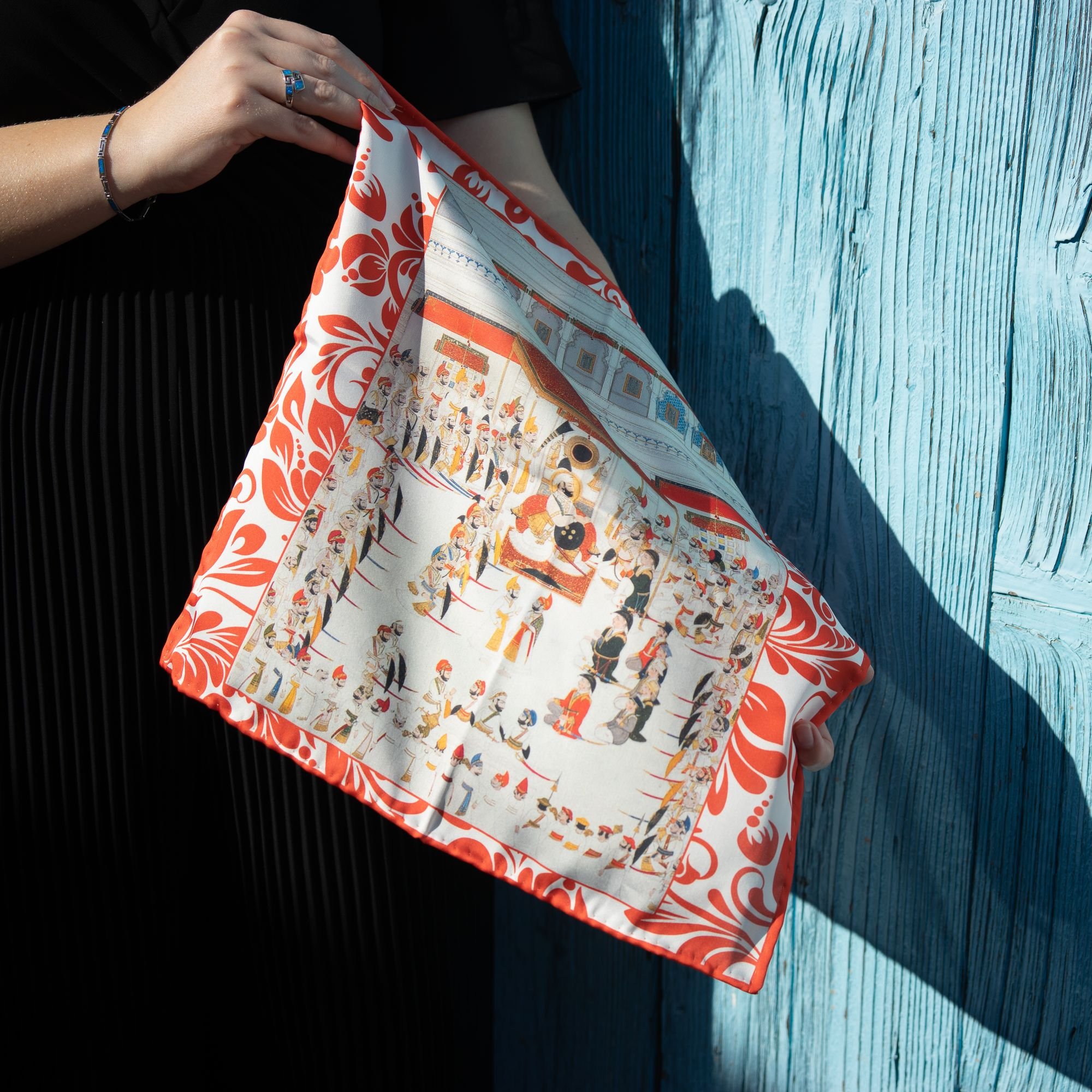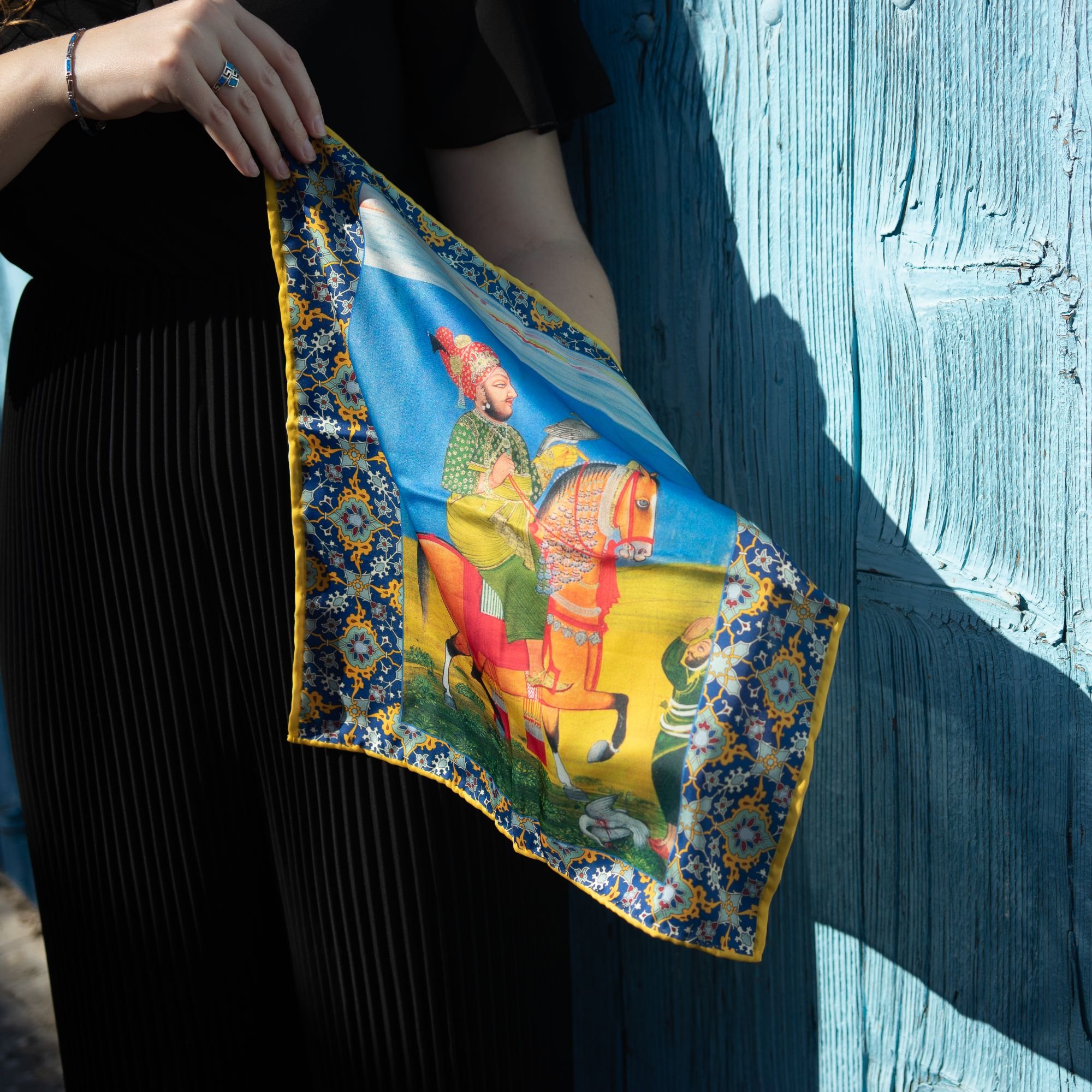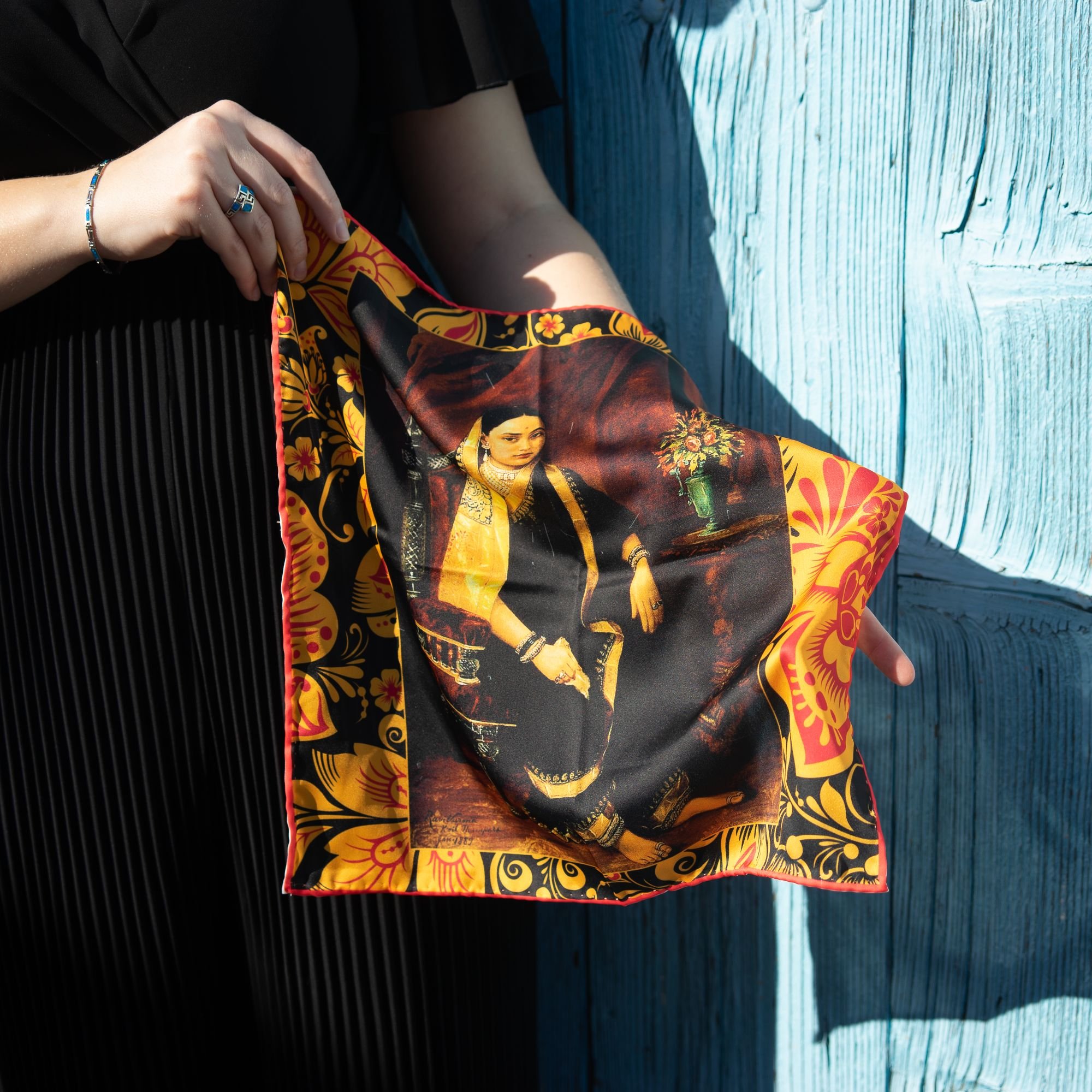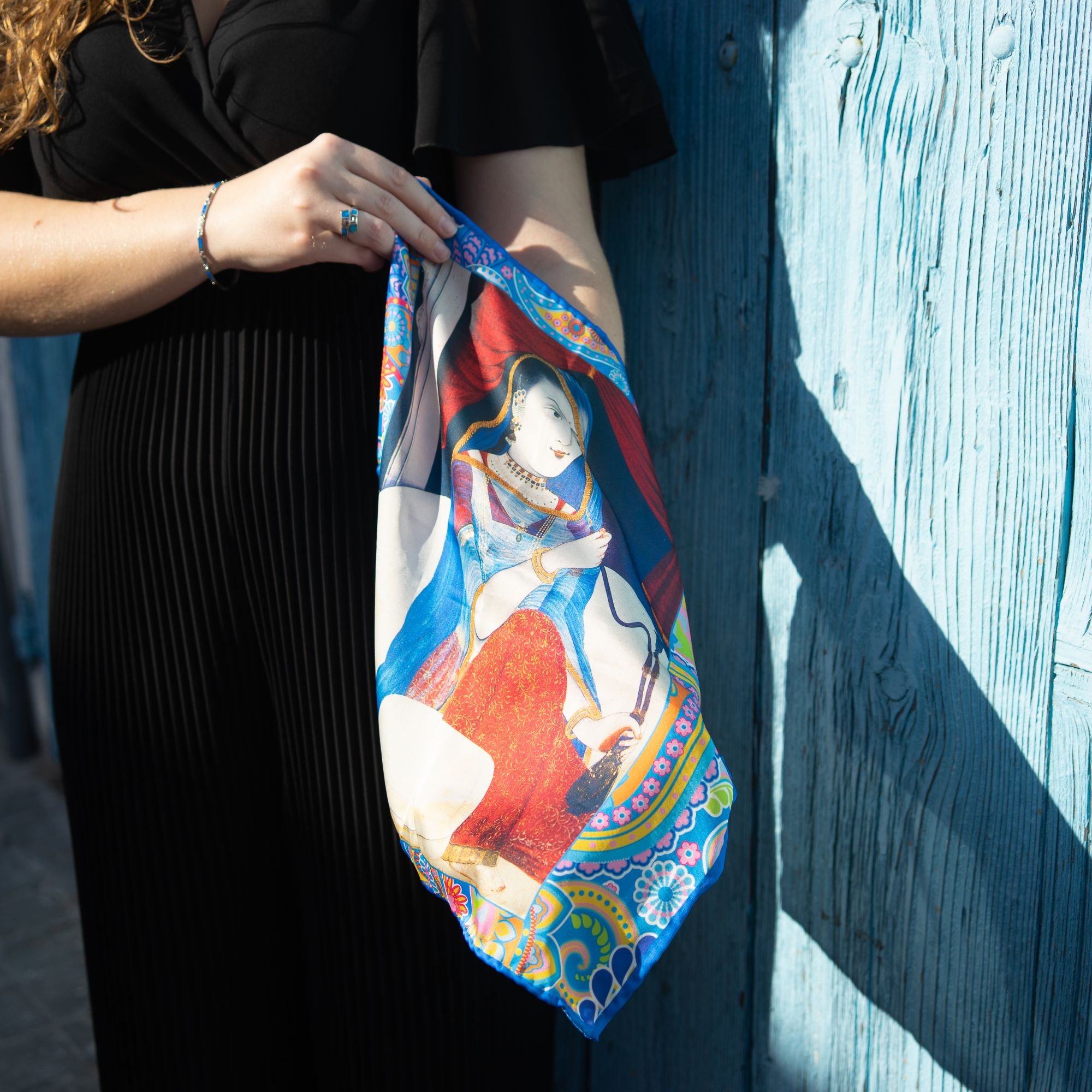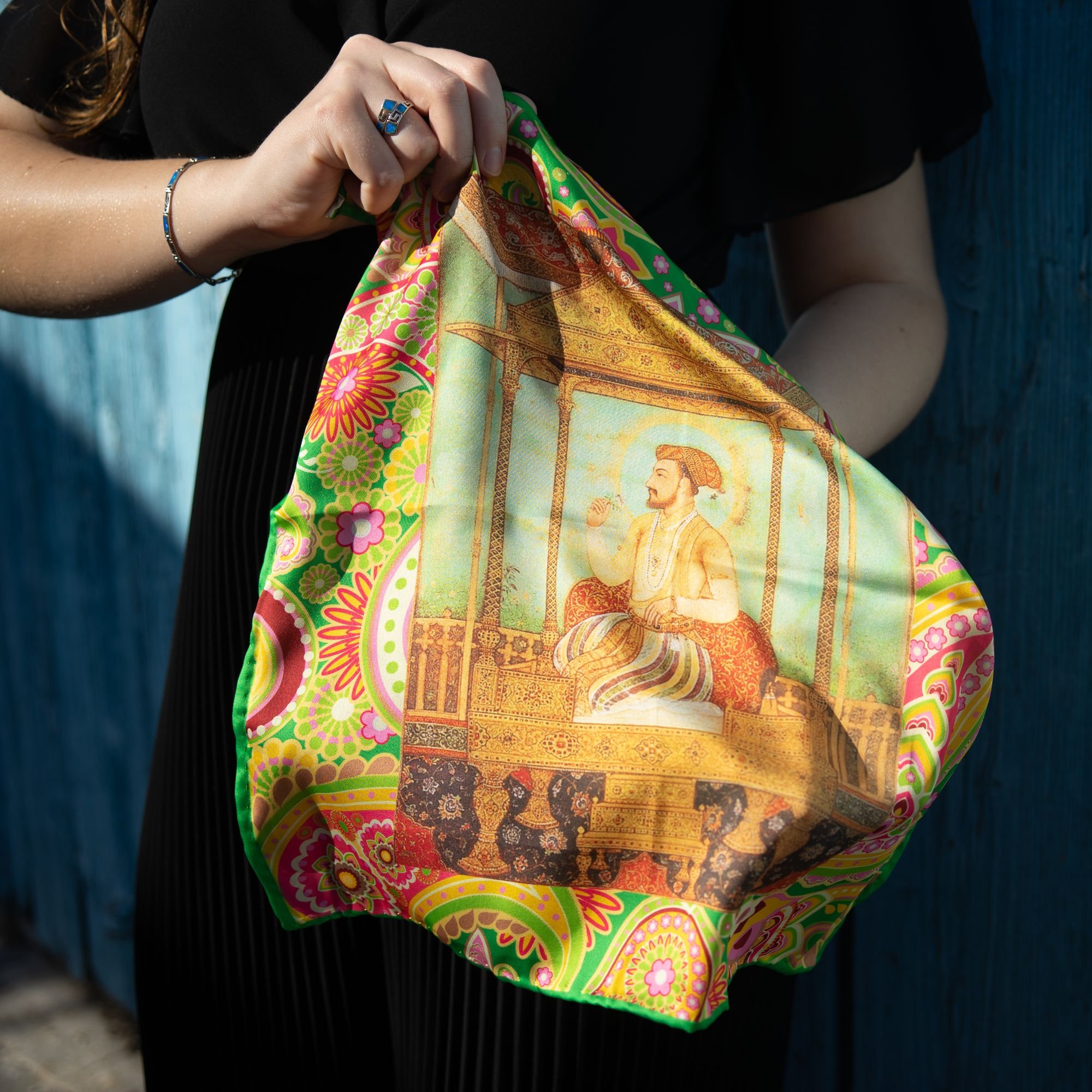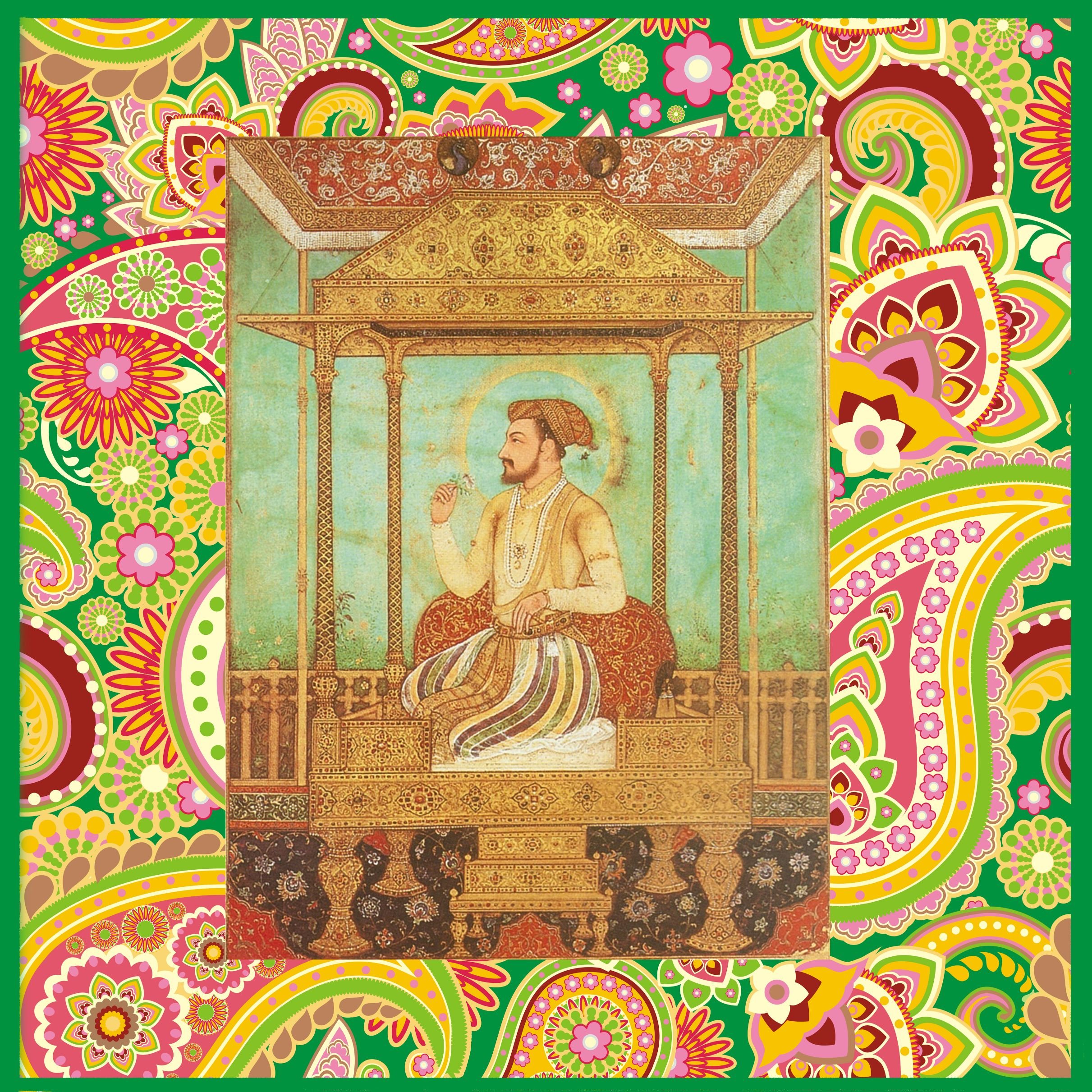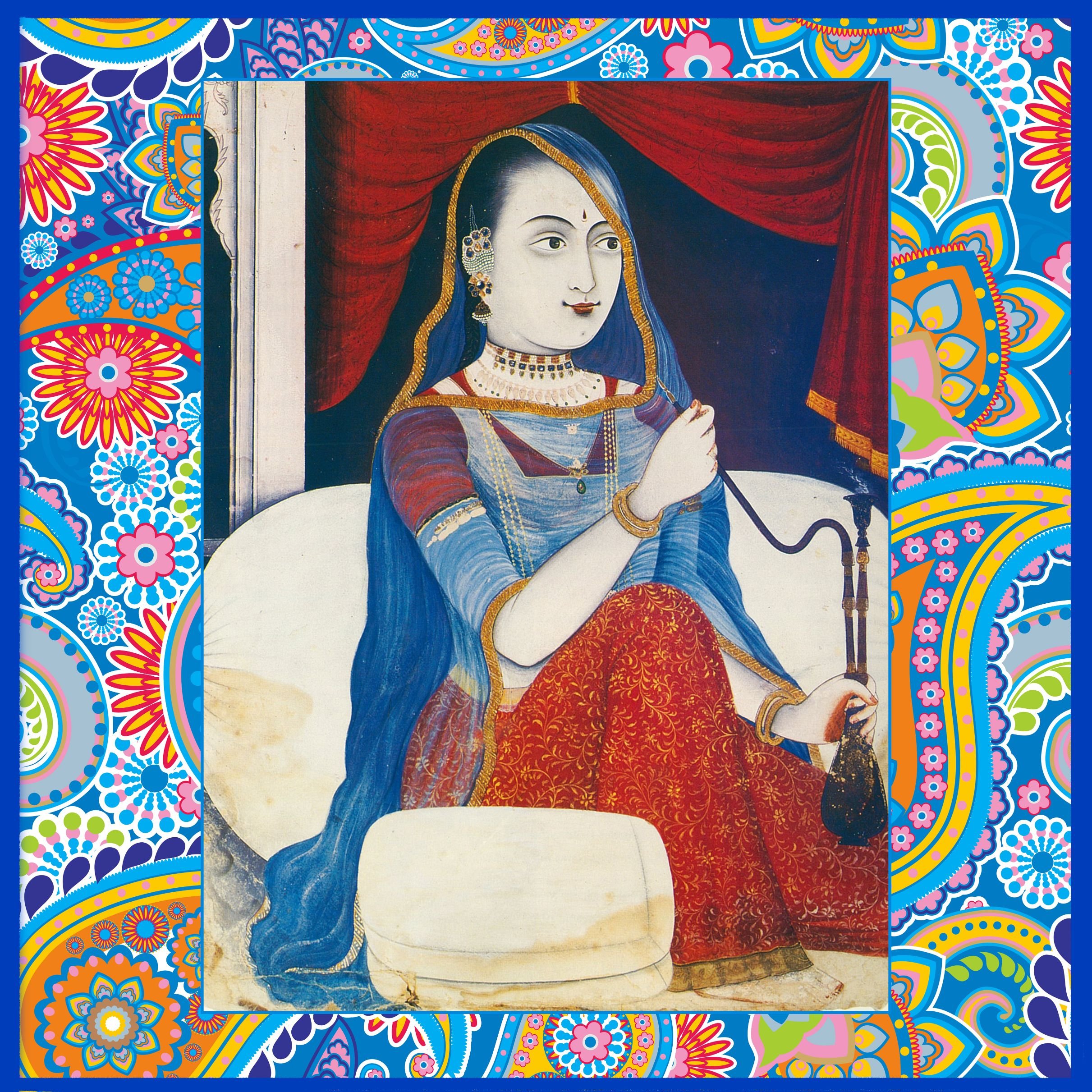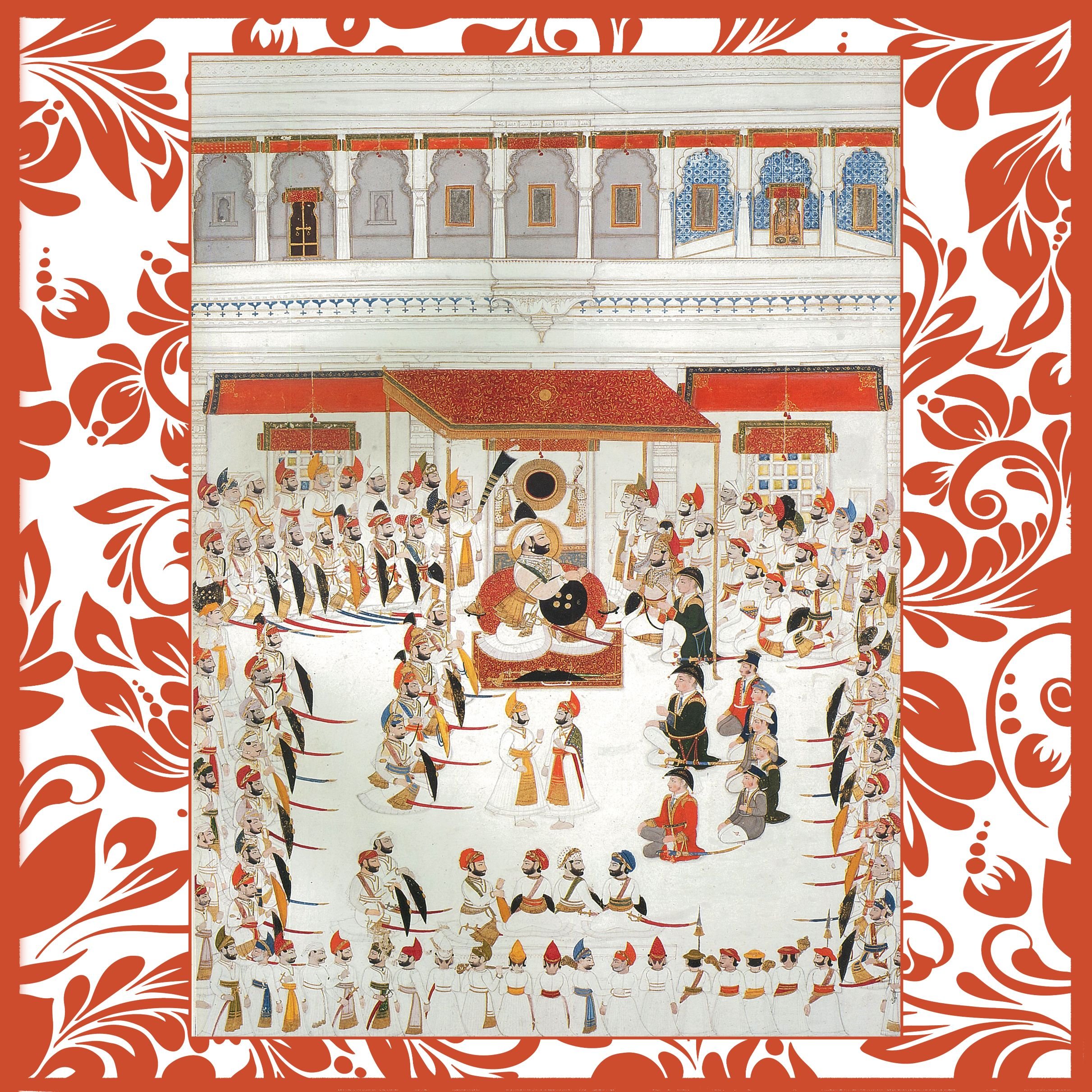Maharaja Pocket Square Series
This collection aims to highlight stunning works of art from the era of Maharajas.
Shah Jahan on the Peacock Throne
The Peacock Throne was a wonder to behold — a gilded platform, canopied in silk and encrusted in precious jewels. Built in the 17th century for the Mughal emperor Shah Jahan, who also commissioned the Taj Mahal, the throne served as yet another reminder of the extravagance of this mid-century ruler of India.
Although the piece only lasted for a short while, its legacy lives on as one of the most ornate and highly sought after pieces of royal property in the region's history. A relic of the Mughal Golden Age, the piece was originally lost and recommissioned before being destroyed forever by rival dynasties and empires.
Portrait of a Courtesan
The serene and distinguished lady of this portrait is a courtesan of Lucknow, the opulent capital of Oudh, a Muslim kingdom that flourished in the twilight of the Mughal. Before the British began to displace Indian rulers, the courtesans were an influential female elite entitled to the protection and patronage of the court. With the gradual loss of princely power in the colonial period, patronage was provided by the new urban elite, particularly in the wealthy, leisured capital of Lucknow whose merchants paid princely sums for the pleasure of the company of the courtesans.
Courtesans underwent rigorous training to ensure they would please and entertain their patrons. Many belonged to famous lineages and in the nineteenth century were in the highest tax bracket, with the largest incomes of anyone in Lucknow. While the names of some famous courtesans are known, this anonymous one, resplendent with elaborate earrings and necklaces in the Lucknow style, symbolizes the beauty, confidence and power of the courtesan who were respected members of the community until the advent of the British who initiated the perception that they were disreputable.
Maharaja Meeting with the British
Bhim Singh receiving Charles Metcalfe in the Mor Chowk, Possibly Chokha Udaipur, about 1826 This painting shows the Maharana of Mewar receiving Sir Charles Metcalfe, the East India Company official who in 1818 had negotiated treaties of Paramountcy with the Rajput rulers of western India. The Maharana sits on the gaddi, with the solar emblem of his dynasty behind him. Everyone else sits on the floor, including – with some discomfort – the British officers in their stiff uniforms.


